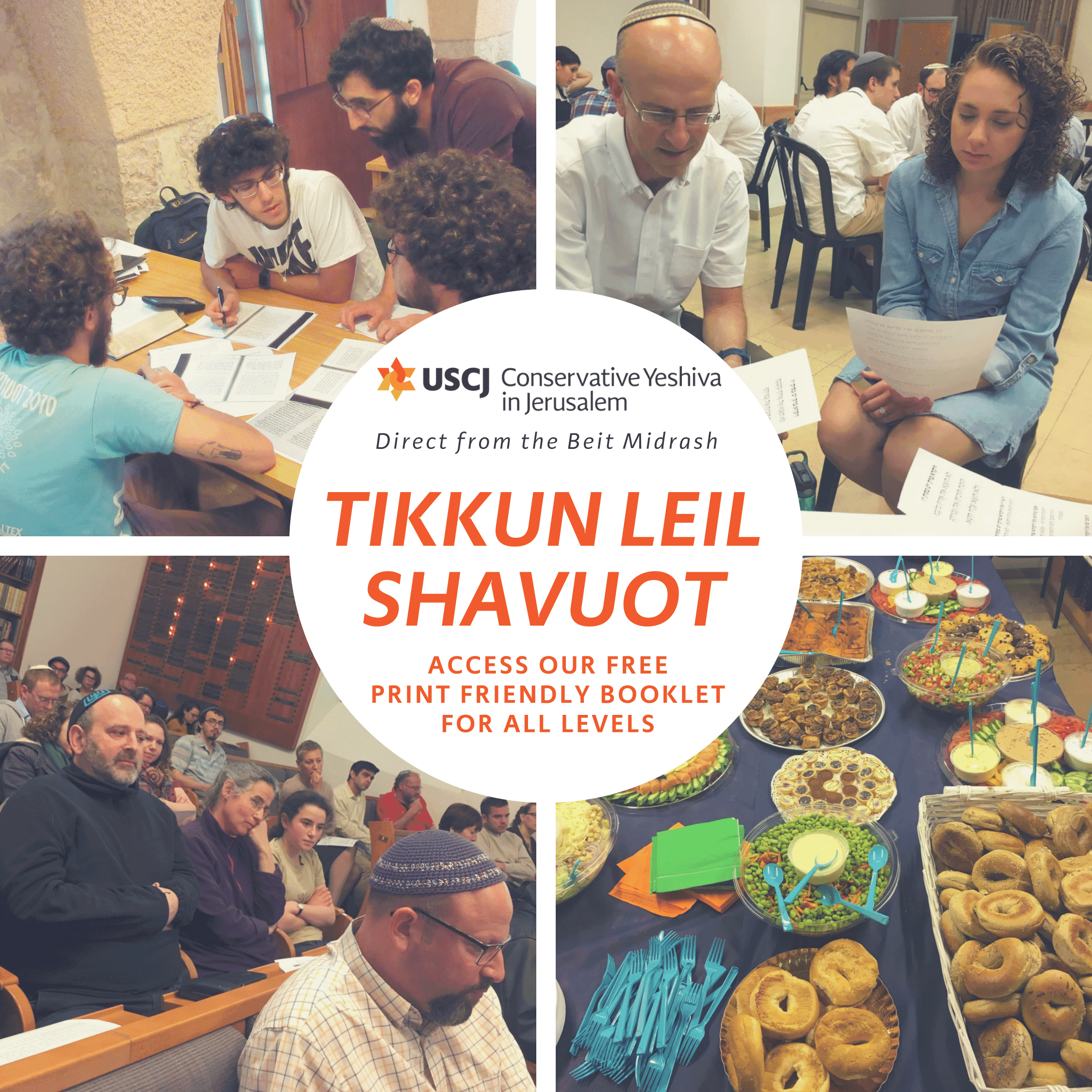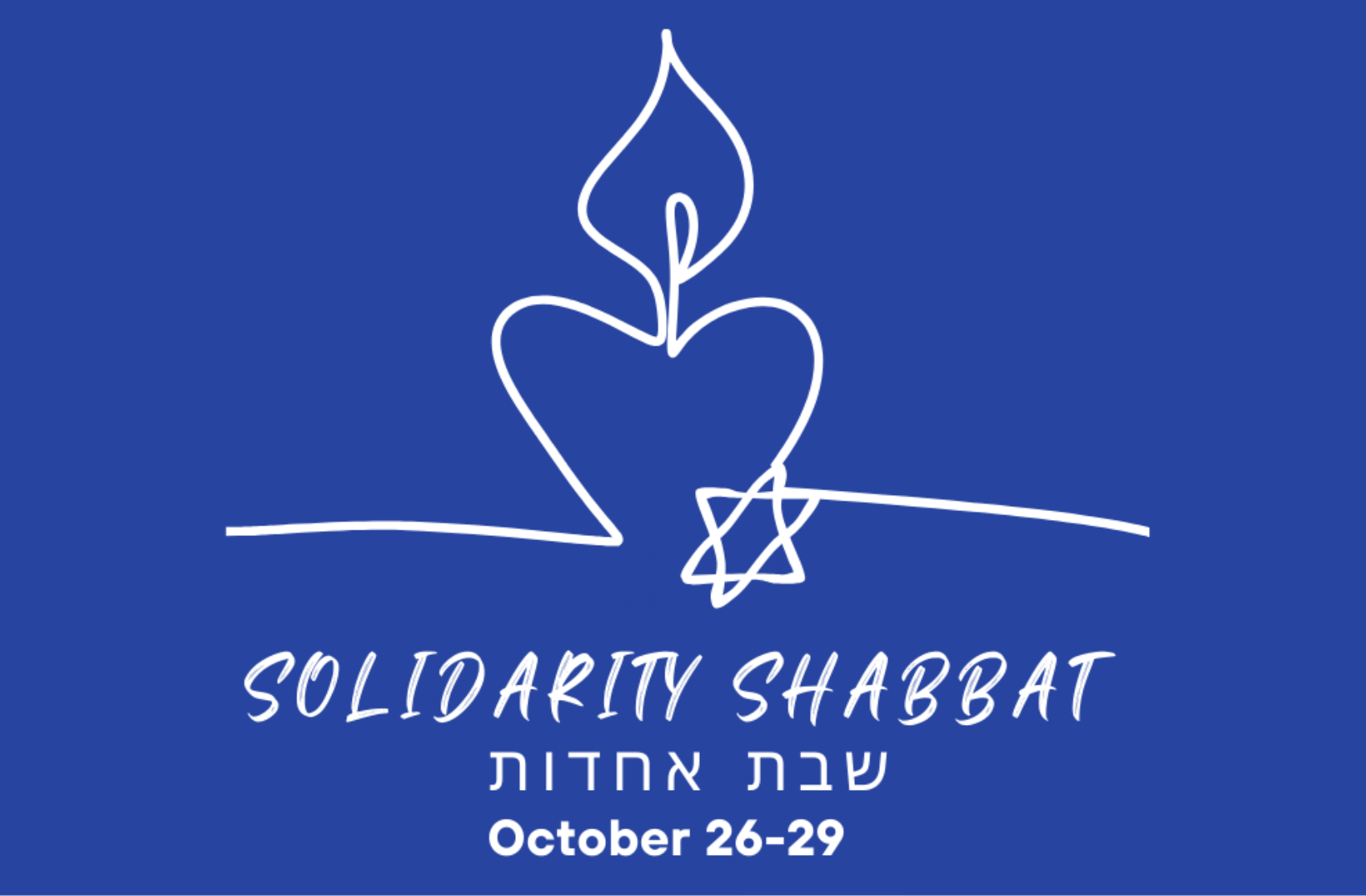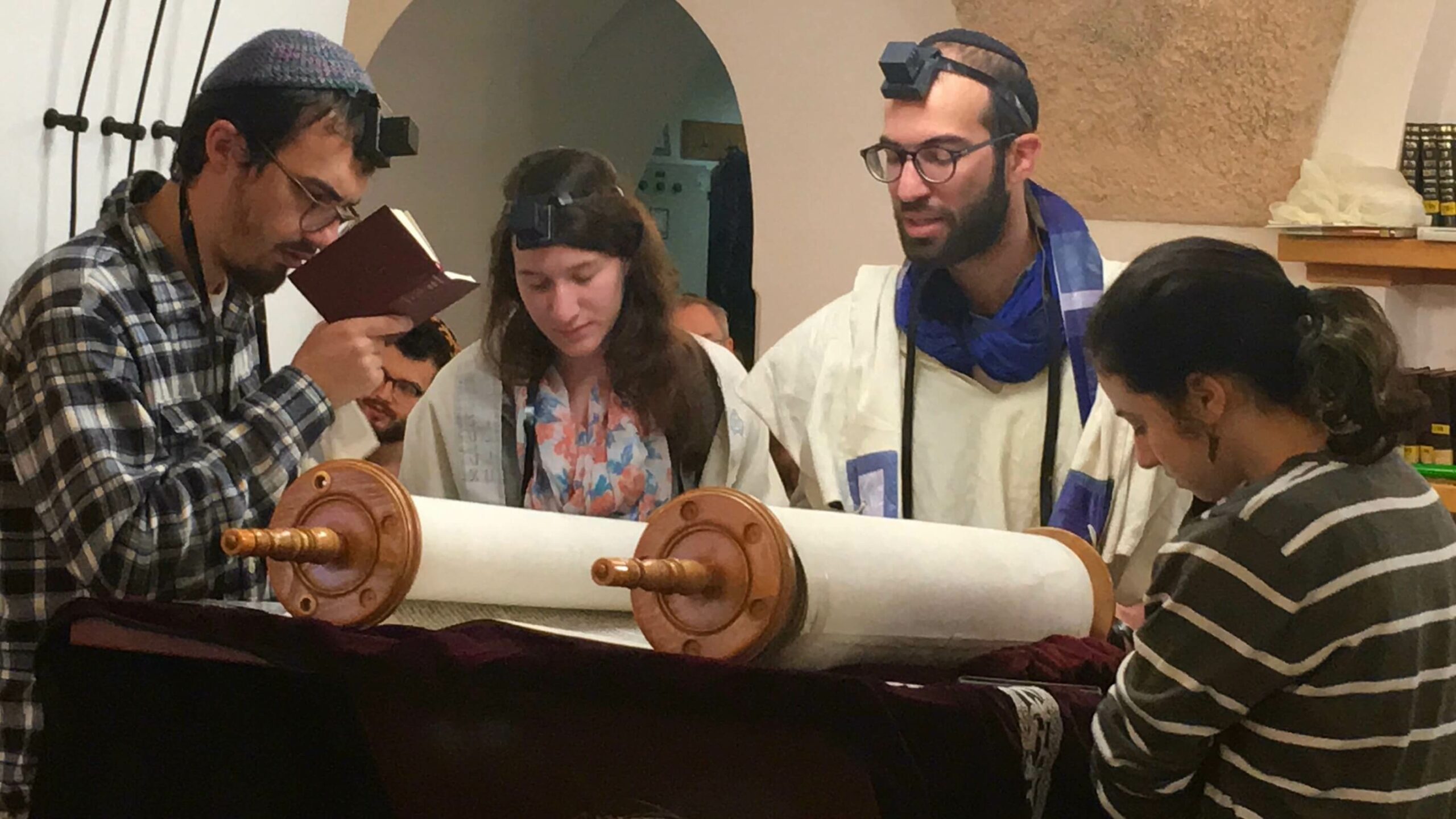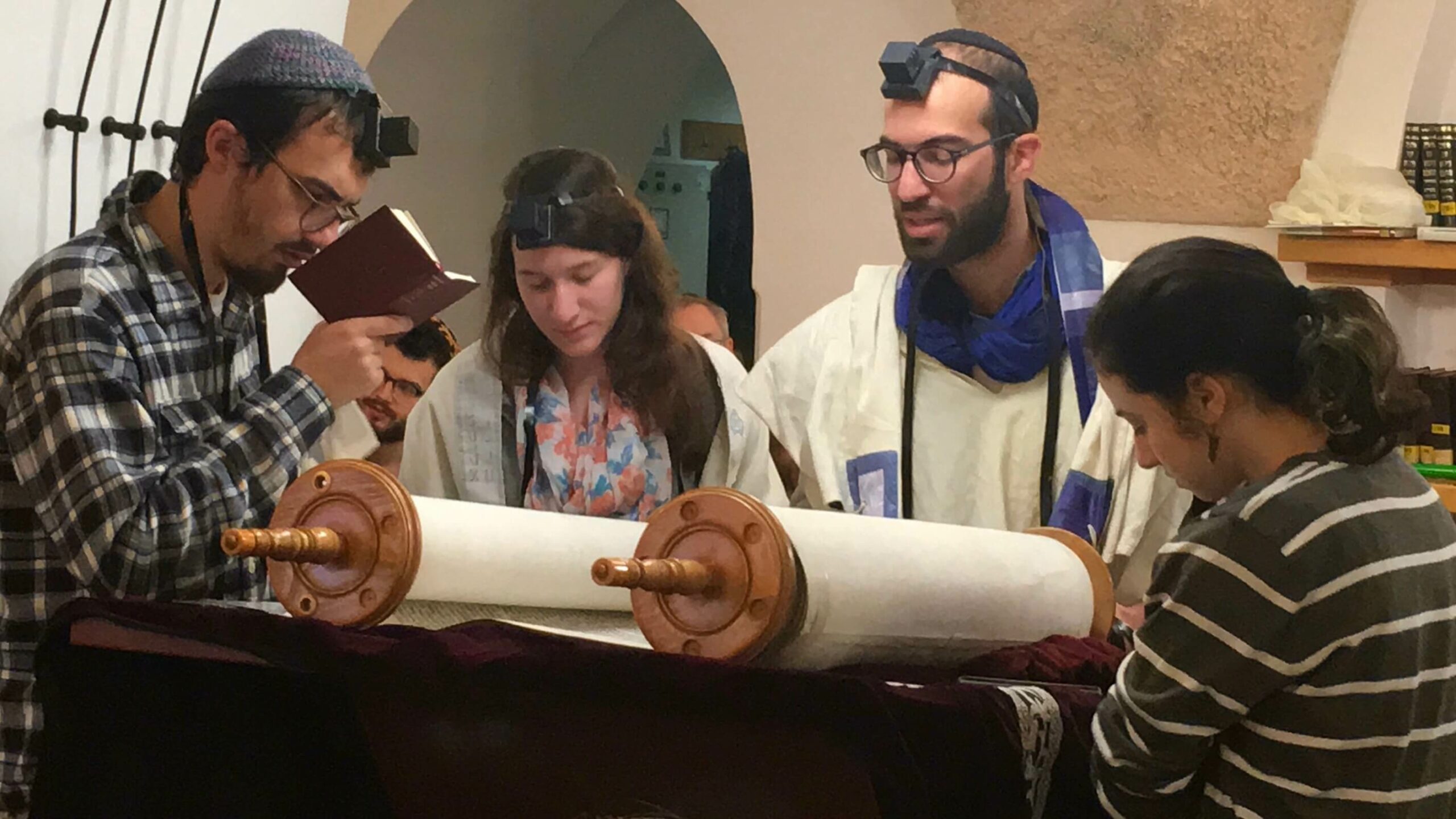
Tikkun Leil Shavuot (print friendly version)
Erev Shavu’ot
May 19, 2018 | 5 Sivan 5778
An Introduction
Originally a custom developed by medieval mystics, the Tikkun is an event during which people remain awake throughout the first night of Shavuot studying Torah and then recite the Morning Service at sunrise. What could be more appropriate than immersion in Torah study as part of one’s observance of the holiday which celebrates the receiving of the Torah? Rabbi Isaac Klein relates an alternate explanation of staying awake all night: that this custom arose because the children of Israel camped at Sinai were sleeping far too soundly and the thunder that accompanied the giving of the Torah was sent along to wake them up! Today, the faithful demonstrate their eagerness to accept the Torah by staying up all night, lest they too be caught sleeping when they should be ready to receive the Torah. Many synagogues organize Torah study sessions that continue through the night.
In this booklet you will find three very different lessons about Shavuot, prepared by senior faculty from the Conservative Yeshiva in Jerusalem – one rooted in Talmud, one in Bible, and one in Jewish Mysticism. If you appreciate these materials and sophisticated Torah study, we invite you to join us in Jerusalem or virtually using our Online Beit Midrash.
Extraordinary People In An Ordinary World – The Story of Ruth
Vered Hollander-Goldfarb, Conservative Yeshiva Faculty
External source sheet is available as a PDF
The story of Ruth is set in the time in which judges led the People of Israel, a period known for lack of order, government, and cohesiveness among the tribes of Israel. The story is set in the midst of the additional crisis of a famine. Against this backdrop we meet Elimelekh and his sons, Makhlon and Kilyon, a well-to-do family from Bethlehem in Judah, who moved to Moab in Transjordan. There they settle, the sons marry Moabite women, and subsequently all three men die. They leave behind three women, all of whom seem to be minor characters in the story of these men.
Reading carefully between the lines and utilizing understanding of human nature, we see great complexities in this story; a story of petty and ordinary folks interwoven with the lives of a few extraordinary, kind individuals. So extraordinary were they that the kingship, and ultimately the Messiah, would come from their offspring.
Famine caused the family to leave their community in Bethlehem (translated literally the name of the city means ‘the house of bread/food’). Reading about their comfortable resettlement in Moab, we become suspicious. Throughout human history people have been forced from their homes due to lack of sustenance. Mass migrations due to famine and war have pushed entire populations into refugee camps, where human beings subsist as shadows at the edges of society. But the story of Elimelekh and his family does not fit into this paradigm. Upon her return to Canaan, Naomi declares, “I left full” (Ruth 1:21), hardly a depiction of a person fleeing in a state of starvation. Indeed, upon their arrival in Moab, the sons marry local women. At a time when marriages were arranged to form ties between families, one has to ask what a supposedly poor refugee could offer to entice a local family to allow him to marry their daughter; unless of course, the family of Elimelekh were not poor refugees but a well-off family that had simply relocated.
Elimelekh was criticized harshly for leaving the land of Israel by rabbis who, centuries later, faced similar dilemmas. Periods of hardship in Israelled the rabbis to formulate guidelines as to when a person may leave the land of Israel due to economic difficulties and famine (Source 1). The main criterion is the person’s ability to buy food. The rabbis believed that Elimelekh was not suffering of hunger. He left with assets, not destitute due to high market prices. He left because other people in his community were suffering from hunger and were unable to afford the grain in the market. He left so that they could not turn to him with requests for help. Elimelekh was able to provide his family with food; he did not wish to share with those knocking on his door in desperation.
The rabbis view Elimelekh’s death and the deaths of his sons as a punishment for his miserly behavior. However, it is the widowed and bereaved Naomi who is left to cope with her loss. She considered the events as God’s response to her family’s actions. Naomi’s return to Bethlehem is colored by her view. She fully accepts the social shame that she would face upon her return and acknowledges the drastic change in her economic status that will be reflected in a matching drop in her social standing.
In contrast with the disloyalty that Elimelekh and his sons displayed by abandoning their community in a time of need, Naomi found that she had acquired two daughters who are the image of loyalty. Ironically, this loyalty complicated matters for Naomi. The Israelites traditionally had an especially negative attitude towards Moabites and Ammonites (Source 2). Bringing home a Moabite daughter-in-law would hardly have bolstered Naomi’s social standing.
Naomi’s attempts to convince her daughters-in-law, Orpah and Ruth, to return to their land and nation were only partially successful. The text does not explicitly tell the reader that Orpah returned home, it delicately says that she kissed Naomi “while Ruth cleaved to her” (Ruth 1:14). Orpah’s behavior is not frowned upon. It made no sense for her to go to a land that did not want her with a mother-in-law who begged her not to follow her. So what about Ruth? We believe Naomi when she says that Ruth and Orpah should turn around. It would be better for them; it would be easier for her to face her hometown without having to explain the Moabite woman who returned with her (Source 3). On the other hand, being lonely and poor, “empty” – as Naomi defines herself, makes for a very difficult old age. Ruth’s loyalty went beyond all that could be expected of her. She sealed the matter by an oath to share Naomi’s nation, God, and fate. As people in Biblical times knew, an oath could not be broken without dire consequences. Now they will face the wagging tongues of Bethlehem together.
The people of Bethlehem are not criticized any more than we would criticize any ordinary, curious, and a bit thoughtless group of people. Against the backdrop of this ordinary town we meet Boaz, a rich landowner in the town with extraordinary views. Upon inquiring about “the new girl” collecting in his field (for more on the commandment to leave grain for the poor, see source 4), he finds out from his work manager that “she is a Moabite girl, the one that returned with Naomi.” (Ruth 2:6) The manager (who seems to be a good representative of the people of the town) identifies her first and foremost as a foreigner. However, Boaz sees something else; what she had done for her mother-in-law after the death of the man that linked them, and all she gave up to join a nation that was foreign to her (notice that his words in Ruth 2:11 recall the words of God to Abraham in Gen. 12:1).
The reader of a short story of this nature might at this point expect, along with Ruth herself, a happy ending. That ending seems long in coming. The harvest season draws to an end, and Ruth’s hopes of ever living better than her current hand-to-mouth situation dims. Now it is Naomi’s turn to intervene. She is the one who decides to push Boaz towards more substantial assistance. Ruth deserves more than handouts, she should have a home, as Naomi tells her “my daughter, I shall seek for you a place of rest that will be good for you” (Ruth 3:1). Ruth may have hesitated to carry out the plan, and Boaz may have used some “creative” ways to get Ruth married (to him), but by the end of chapter 4 we can finally put down the book with the satisfaction that the story has come to its proper conclusion. Ruth, Boaz and Naomi live happily ever after, rewarded with offspring including a great grandchild that will become known as King David.
However, this is a biblical book, and as such we might wonder why the book of Ruth was canonized. As Rabbi Ze’ira asks in Midrash on Ruth (source 5) it does not contain any legal value, it does not elucidate any other issues, why include it? He answers that Ruth was canonized, “To teach you how great is the reward of those who grant loving kindness (hesed).” It does not contain any villains, the people of Bethlehem are ordinary people, the family of Elimelekh is selfish, but no more than most. Orpah only did as she was begged to do. Against all that gray and ordinary human scenery there are three extraordinary individuals; Naomi, Ruth and Boaz who rose above what was commonly expected from human beings; they are people of hesed (loving kindness). It is not coincidental that on the day that the Jewish tradition considers to be the day we received the Torah, the Law, the rabbis included a reading that stresses hesed– loving kindness that goes beyond the letter of the law.
* * *
I would like to thank the many students and alumni of the Conservative Yeshiva with whom I have had the pleasure of studying the story of Ruth over the years. Their ideas, insights and life experiences have enhanced my already great love for this beautiful story.
Shavuot and Creation
Dr. Shaiya Rothberg, Conservative Yeshiva Faculty
In the beginning, the spirit of Elokim hovered in the darkness over the deep. There was no light and no life. God was alone.
Then God made light; and then a great tent, separating the waters and exposing dry land. God brought forth grasses and trees, hung luminaries in the sky, called out fish and birds and animals and human beings. By the end of day seven, Elokim, who a week before hovered in that lifeless darkness, now beheld a tremendous world-tent; a palace of light and color and movement and life. What was God seeking?
The Sages (BR 4:9) learn about God’s earliest intentions through an oddity in the numbering of the days of creation. This is the order as it appears in Bereshit:
One
Second
Third
Fourth
Fifth
The Sixth
The Sages say it should either be one and then two, or first and then second, but not one and then second; etmahah?! (what could this mean?!)
Thinking about this strange numbering, the sages stepped back to see the holy story in a wider perspective, and they sifted through sacred verses, until one verse stood up and offered a word to unravel the mystery of that misplaced “day one”: “And he that presented his offering the first day was Nachshon…” (Bamidbar 7:12). Nachshon was the first to bring offering in dedicating the mishkan, the “dwelling place”. In this tent, constructed of metal and cloth, priests and sacrifices, blood and spices and the tablets of the covenant, God was to dwell among the People of Israel (cf. Shemot 25:8).
On the “first day”. Rabbi Shmuel Bar Ami interpreted, in the literary/religious state of consciousness in which the Sages seek the meaning of Written Torah: this is the missing “first day” that should have come before the “second day” of creation! Why does it appear so late, when Israel dedicated the mishkan? And why in creation does it say “day one” instead? Because “one” was the Holy One’s state at the very beginning: God was completely alone. And the “first day” appears only at the time of the mishkan because then God first dwelled among creation: God was no longer alone. Later, about these first days of indwelling, God would say, “I remember for you the kindness of your youth, the love of your betrothal, the way you followed me in the desert, in a land of wilderness” (Jeremiah 2:2). The oddity in numbering encoded God’s first intention: seeking union with creation by dwelling in the mishkan. In this sense, the dedication of the mishkan was the most important first day.
And why does it say “the sixth”? Reish Lakish said (Shabbat 88a), it teaches that God made a condition with Creation: “if Israel accepts the Torah, you will endure; if not, I will return you to tohu vevohu!” Why? Because accepting the Torah makes the purpose of creation, God’s indwelling, possible. Therefore “the sixth,” it refers to that well-known sixth, Shavuot, the sixth of Sivan: the day of covenant that opened the gate to “the kindness of your youth, the love of your betrothal”.
And so the “One” of Day One hints at God’s first intent. “The Sixth” encodes the giving of the Torah on Shavuot, the necessary means for realizing that divine intention. Even the numbering of days is pregnant with meanings in God’s mysterious Word.
Shavuot in the Talmud: Pesahim 68b
Rabbi Mordechai Silverstein, Conservative Yeshiva Faculty
The Talmud (Pesahim 68b) records, in a baraita, a debate between two prominent Tannaim, Rabbi Eliezer and Rabbi Yehoshua, about how a person should conduct him or herself on hag (festival): “Rabbi Eliezer said: ‘On a festival, a person has nothing to do but either to eat and drink or to sit and study.’ Rabbi Yehoshua said: ‘Divide it: half for eating and drinking and half for the beit hamidrash [to spend in study].’” Rabbi Yehoshua’s statement reflects his position that simhat hag is a mitzvah which requires eating and drinking as well as the study of Torah.
Rabbi Yohanan, an Amora, based the debate between these two sages on their different interpretations of the same two verses from the Torah regarding the festivals. “One verse says: ‘A solemn assembly for the Lord your God’ (Deuteronomy 16:8); whereas the other says: ‘there shall be a solemn assembly for you‘ (Numbers 29:35). Rabbi Eliezer holds: [This means] that one [may choose to dedicate the day] either entirely “to God” (in study) or entirely “to you” (in eating and drinking). Rabbi Yehoshua holds: [One infers from these verses to] divide it [the festive day] – half to God and half for yourselves.’” In other words, while Rabbi Eliezer says that one may either study or eat and drink on hag, Rabbi Yehoshua requires both.
The Talmud adds another layer to this discussion, marking Shavuot as unique among the festivals: “[The Amora] Rabbi Elazar said: ‘All agree with regard to Atzeret [Hag HaShavuot] that [the element] of “for you” is required.’ The practical result of this is that even Rabbi Eliezer requires eating and drinking on Shavuot. What is the reason? It is the day that the Torah was given.”
While ultimately the halacha has been decided like Rabbi Yehoshua for all of the festivals, what is so special about Shavuot that justifies Rabbi Elazar’s opinion that even Rabbi Eliezer requires festive rejoicing? Rashi offers what seems a prosaic answer to this question: “We should rejoice on this day with food and drink to dramatize that this day on which God gave us the Torah is pleasant and acceptable to us.” For Rashi, the act of eating and drinking demonstrates that we consider the Torah a source of joy and not a burden.
Two rabbis who lived at the turn of the 20th century seek deeper meaning in the connection between eating and drinking and the giving of the Torah. Rabbi Meir Simha from Dvinsk, one of the great representatives of Lithuanian Torah study, in his Torah commentary, Meshekh Hokhmah (Ex. 20:18 Cooperman ed. p. 166), asserts that the act of rejoicing with food and drink on Shavuot symbolically teaches us that a life of Torah is a means to purify and sanctify the material world and elevate it spiritually.
Rabbi Arye Leib Alter, the second Gerer Rebbe, in his sermons, Sfat Emet (Shavuot 5644 Or Etzion ed. p. 317), views the consensus between Rabbi Eliezer and Rabbi Yehoshua with regard to Shavuot as something different. He claims that there was a mahloket (a dispute) among the angels-on-high over whether human beings have a role in the divine realm or not. But when the angels saw the universal acclaim the people gave Moses upon receiving the Torah at Mount Sinai, all of them agreed to accept the human role in the divine realm. This is how the Sfat Emet reinterprets Rabbi Elazar’s words “All agree“.
We have seen here how Rabbinic interpretation has turned Hag Shavuot, which is not referred to as an Atseret in the Torah at all, into a Hag of special significance, and how two more recent interpretations portray it as a profound celebration of the human empowerment implied in the acceptance of Torah. For the rationalists amongst us, it provides an opportunity to rectify and reclaim for God the world we live in. And for those of us with a mystical passion, Shavuot enables us to reclaim and repair not only the material world but the spiritual world as well.





